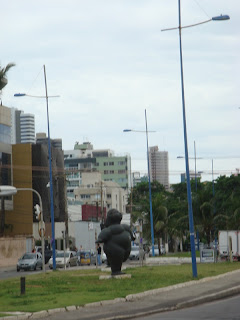Salvador (Saviour, often colloquially Salvador da Bahia, Portuguese pronunciation]; historic name: São Salvador da Bahia de Todos os Santos, in English: "City of the Holy Saviour of the Bay of all Saints" is the largest city on the northeast coast of Brazil and the capital of the Northeastern Brazilian state of Bahia. -Wikipedia
Salvador is also known as Brazil's capital of happiness due to its countless popular outdoor parties, including its street carnival. The first colonial capital of Brazil, the city is one of the oldest in the Americas. For a long time, it was simply known as Bahia, and appears under that name (or as Salvador da Bahia, Salvador of Bahia so as to differentiate it from other Brazilian cities of the same name) on many maps and books from before the mid-20th century. Salvador is the third most populous Brazilian city, after São Paulo and Rio de Janeiro. The metropolitan area of the city, with 3.5 million of people, however, is the seventh most populous Brazilian urban agglomeration, and the third in Brazilian Northeast Region.














The Historic Centre (known in Portuguese as The Pelourinho) is a historic neighborhood located in the western zone of Salvador, Bahia. It was the city's center during the Portuguese Colonial Period, and was named for the whipping post (Pelourinho means Pillory) in its central plaza where African slaves received punishment for various infractions, as well as for disciplinary purposes.
The Historic Centre of Salvador da Bahia, frequently called the Pelourinho, is extremely rich in historical monuments dating from the 17th through the 19th centuries. Salvador was the first colonial capital of Brazil and the city is one of the oldest in the New World (founded in 1549 by Portuguese settlers). It was also the first slave market on the continent, with slaves arriving to work on the sugar plantations.
Wikipedia























































